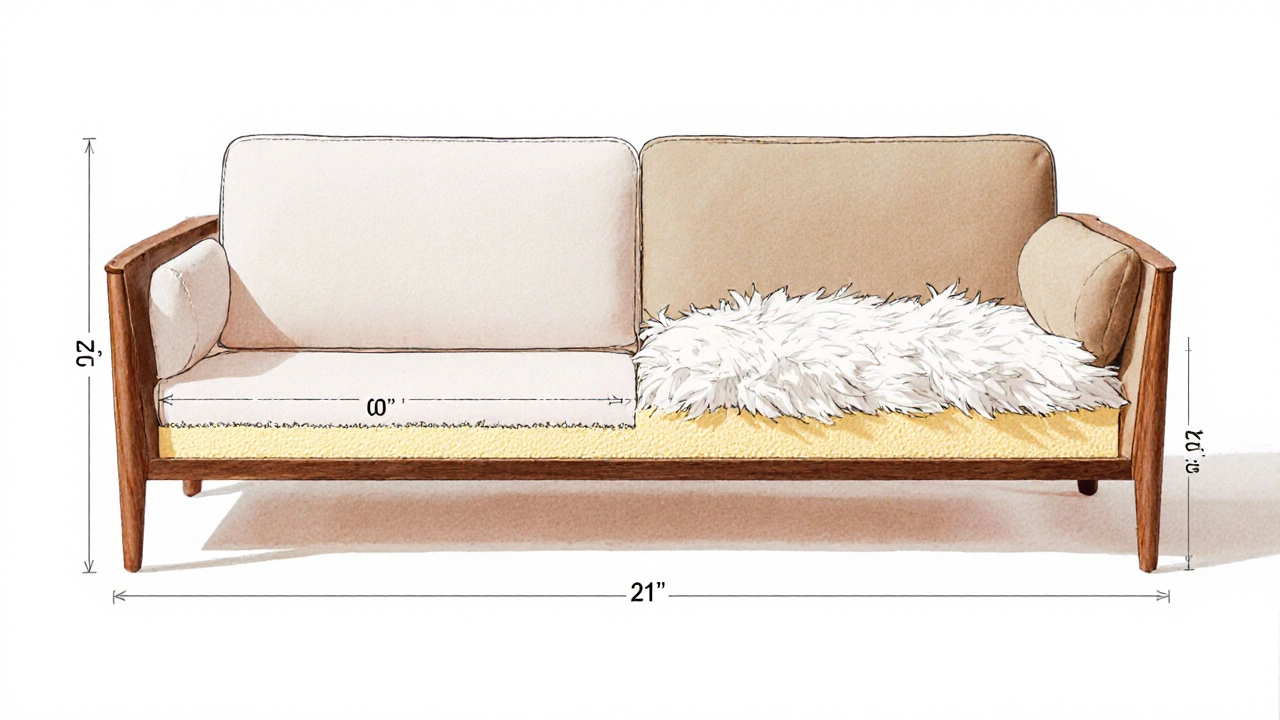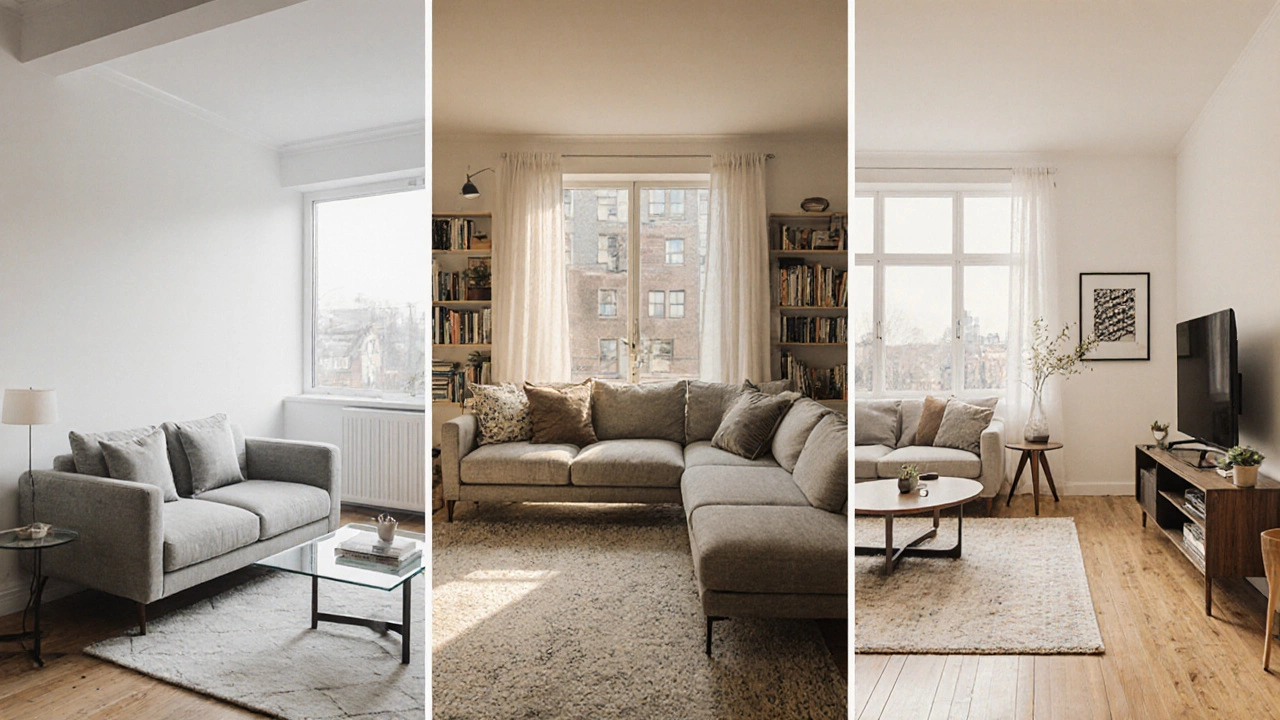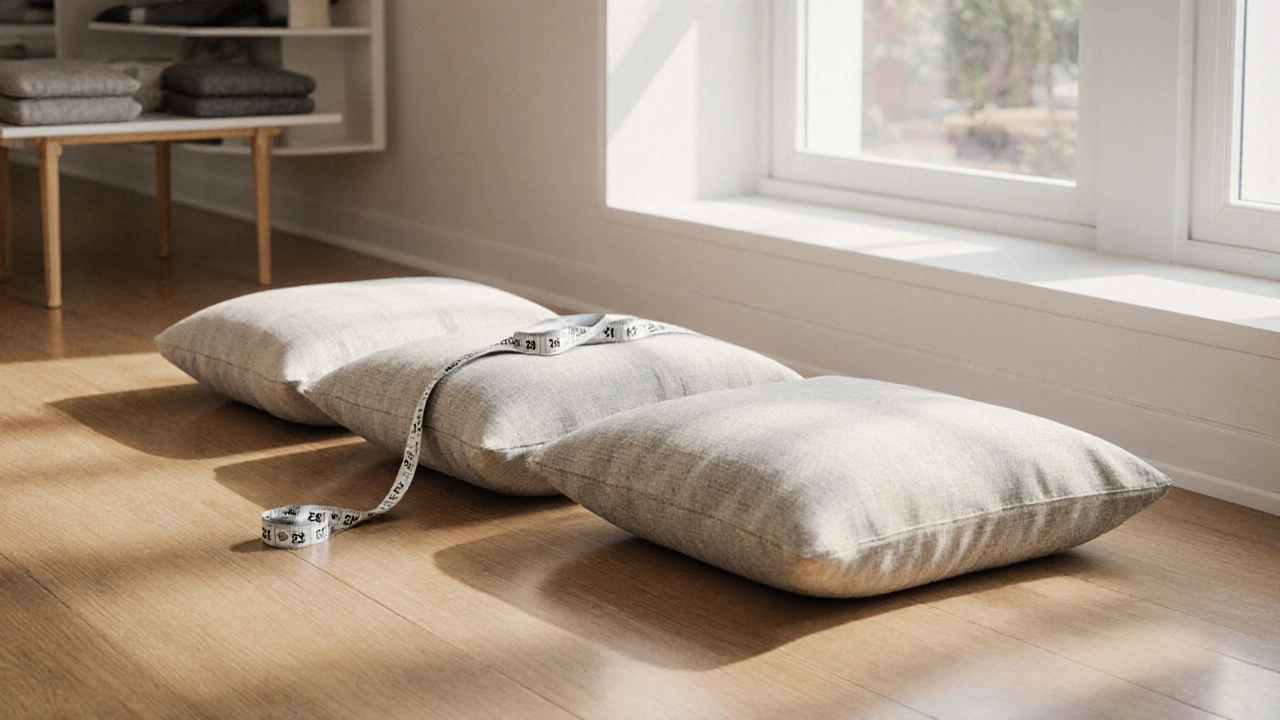Sofa Cushion Size Calculator
Find Your Perfect Cushion Size
Recommended Cushion Size
Why this works: This size balances comfort with room proportions based on your input.
When shopping for a new sofa, the Sofa cushion size refers to the dimensions of the individual cushions that make up a sofa seat and back is one of the first things to check. A well‑chosen cushion size not only boosts comfort but also keeps the visual balance of your living room. In this guide we’ll break down the most common sizes on the market, explain why they dominate the industry, and give you a quick way to decide what works best for your space.
Key Takeaways
- The industry‑standard sofa cushion size in the U.S. is 20‑22 inches wide by 20‑22 inches deep.
- Seat depth and seat width are the two measurements that drive cushion size decisions.
- Back cushion height typically ranges from 12‑16 inches, affecting posture support.
- Choosing the right size depends on sofa style, body type, and room layout.
- Check upholstery fabric durability and cushion fill material before buying.
Understanding the Core Measurements
Before you can talk about “popular” sizes, you need to know the three basic dimensions that define any cushion:
- Seat depth measures how far the cushion extends from the front edge to the back. Most sofas sit between 20 and 23 inches deep.
- Seat width covers the left‑right span of each individual cushion. The sweet spot for mass‑market sofas is 20‑22 inches.
- Back cushion height is the vertical distance from the seat cushion to the top of the back cushion. Standard models sit at around 12‑16 inches.
These three figures interact with each other. A deeper seat often means a slightly narrower cushion to keep the overall sofa silhouette proportional.
What the Data Says: Most Common Sizes in 2025
Market research from the Furniture Industry Association (FIA) shows that 68% of new sofas released in 2024‑2025 use a cushion width of 21 inches and a depth of 21 inches. That 21×21 footprint has become the de‑facto benchmark because it marries comfort with a clean, squared‑off look that works in both modern and traditional interiors.
Here’s a quick snapshot of the top three size groups and where you’ll see them most often:
| Width (in) | Depth (in) | Back Height (in) | Common Style | Best For |
|---|---|---|---|---|
| 21 | 21 | 14 | Mid‑century, contemporary | Average‑height adults, balanced look |
| 22 | 22 | 15 | Traditional, Chesterfield | Long‑legged users, classic rooms |
| 20 | 20 | 12 | Scandinavian, low‑profile | Cozy spaces, minimalistic decor |
Notice how the most popular 21×21 size sits right in the middle, giving a comfortable seat depth without making the sofa appear bulky.

How to Choose the Right Size for Your Home
Even though the 21×21 cushion is the crowd‑favorite, it isn’t a one‑size‑fits‑all solution. Consider these three decision points:
- Body type and sitting habits - taller users tend to favor deeper seats (22‑23in) to avoid feeling cramped. If you often lounge with a coffee table, a deeper cushion improves legroom.
- Room dimensions - measure the wall space where the sofa will live. Leave at least 18in of clearance on each side for traffic flow. A small apartment may benefit from the 20×20 option to keep the room airy.
- Design language - low‑profile sofas (often 20in deep) pair well with sleek coffee tables and glass accents. Traditional, plush sofas usually carry the larger 22in cushions.
When in doubt, grab a piece of cardboard the same size as the cushion you’re considering and lay it on the floor. Walk around it, sit, and see if the proportions feel right.
Why Cushion Fill and Upholstery Matter
Two hidden variables can make a cushion feel much larger or smaller than its actual dimensions.
- Cushion fill material ranges from high‑density foam to down feathers. High‑density foam holds shape longer, giving the illusion of firmer support, while down adds plushness that can make a smaller cushion feel more spacious.
- Upholstery fabric affects visual bulk; thick, textured fabrics add perceived volume. Light‑weave linen keeps the cushion silhouette sleek.
When you order a sofa, ask the retailer for the exact foam density (measured in pounds per cubic foot) and the type of fabric. A 2‑inch high‑density foam core with a 1‑inch feather layer often hits the sweet spot for comfort and durability.

Buying Tips: Avoid Common Pitfalls
- Don’t rely solely on the catalog image. Dimensions can be rounded; always request the exact measurements.
- Check the cushion removal method. Some modern sofas use snap‑in cushions that are hard to replace; others have zip‑pered tops for easy cleaning.
- Ask about cushion replacement policy. A reputable dealer will offer at least a 2‑year warranty on cushion integrity.
- If you live in a humid climate, choose moisture‑resistant upholstery and a foam blend that resists sagging.
Following these pointers keeps you from ending up with a sofa that looks great but feels cramped or wears out quickly.
Real‑World Examples: How the Popular Size Plays Out
Below are three short case studies that illustrate why the 21×21 cushion size is the go‑to for many homeowners.
- Urban loft, 750sqft. Designer Emily chose a low‑profile sectional with 21×21 cushions. The sofa fits snugly against a concrete wall, leaving enough space for a coffee table and a small bookshelf.
- Family home, 2,200sqft. The Jones family needed a deep, comfortable sofa for movie nights. They opted for 22×22 cushions paired with a high‑density foam core, giving everyone ample legroom.
- Cozy cottage, 1,100sqft. A Scandinavian‑style sofa with 20×20 cushions created a light, airy feel, complementing the white walls and natural wood floors.
Notice how each scenario matches the cushion size to the room’s scale and the occupants’ needs.
Frequently Asked Questions
What cushion size should I pick for a small apartment?
A 20×20 cushion works best in tight spaces. It keeps the sofa profile low and leaves more floor area for traffic and other furniture.
Are larger cushions always more comfortable?
Not necessarily. Comfort also depends on fill material and back cushion height. A well‑designed 21×21 cushion with high‑density foam can feel more supportive than a 22×22 cushion filled with low‑grade foam.
How can I measure my existing sofa cushions accurately?
Use a metal tape measure. Measure the width across the cushion face, the depth from front edge to back, and the height from seat surface to top of the back cushion. Write down each figure and compare with manufacturer specs before ordering a replacement.
Does cushion size affect the sofa’s lifespan?
Yes. A cushion that’s too small for the frame will compress quickly, while an oversized cushion can sag unevenly. Matching size to frame design and using appropriate fill helps the sofa retain its shape for years.
Can I mix different cushion sizes on the same sofa?
Mixing sizes is possible in modular designs, but for a traditional sofa it can look unbalanced. If you want visual variety, change the throw pillow size instead of the main seat cushions.
